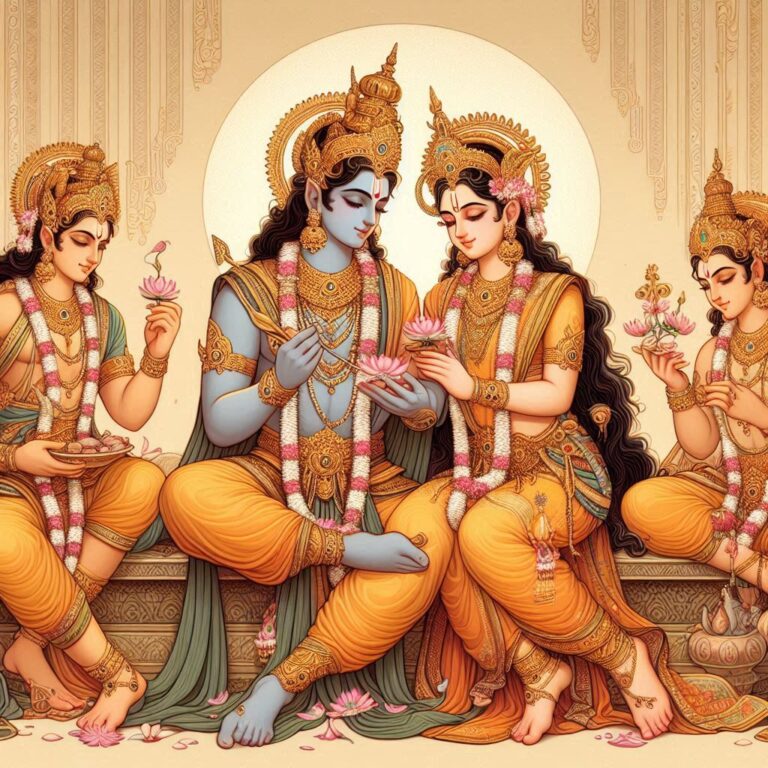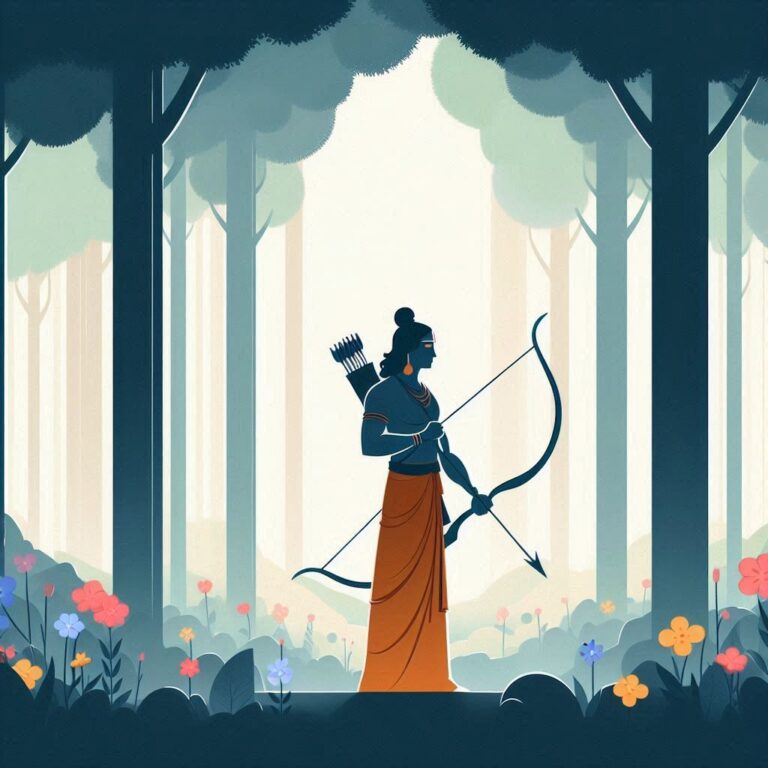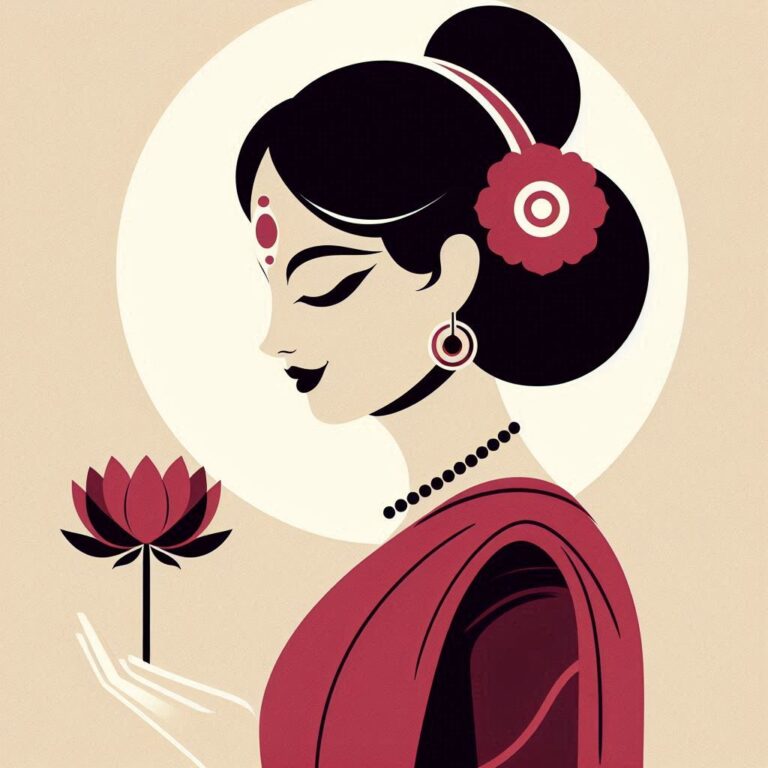Historical Setting and Cultural Background of the Ramayan
Historical Setting and Cultural Background of the Ramayan
The Ramayan is more than just a story; it is a cultural epic that has shaped the very essence of Indian society and its values. To fully appreciate the Ramayan, it is essential to understand the historical and cultural backdrop against which this timeless tale was composed.
Understanding the Ramayan’s Historical Context
The Vedic Age and Its Influence
The Ramayan is deeply rooted in the Vedic age, a period that laid the foundation for much of Hindu philosophy, rituals, and societal structures. The Vedic age, spanning roughly from 1500 BCE to 500 BCE, was characterized by the composition of the Vedas, the oldest sacred texts of Hinduism. The values and practices from this era, including the concepts of Dharma (righteousness) and Karma (action), heavily influenced the Ramayan.
Shloka:
सर्वधर्मान् परित्यज्य, मामेकं शरणं व्रज।
अहं त्वां सर्वपापेभ्यो, मोक्षयिष्यामि मा शुचः।।
Sarva-dharmān parityajya, mām ekaṁ śaraṇaṁ vraja।
Ahaṁ tvām sarva-pāpebhyo, mokṣayiṣyāmi mā śucah।।
Translation: Abandon all varieties of religion and just surrender unto Me. I shall deliver you from all sinful reactions; do not fear.
This shloka from the Bhagavad Gita, which shares the same philosophical roots as the Ramayan, echoes the idea of surrendering to a higher purpose and divine will—a theme central to the epic.
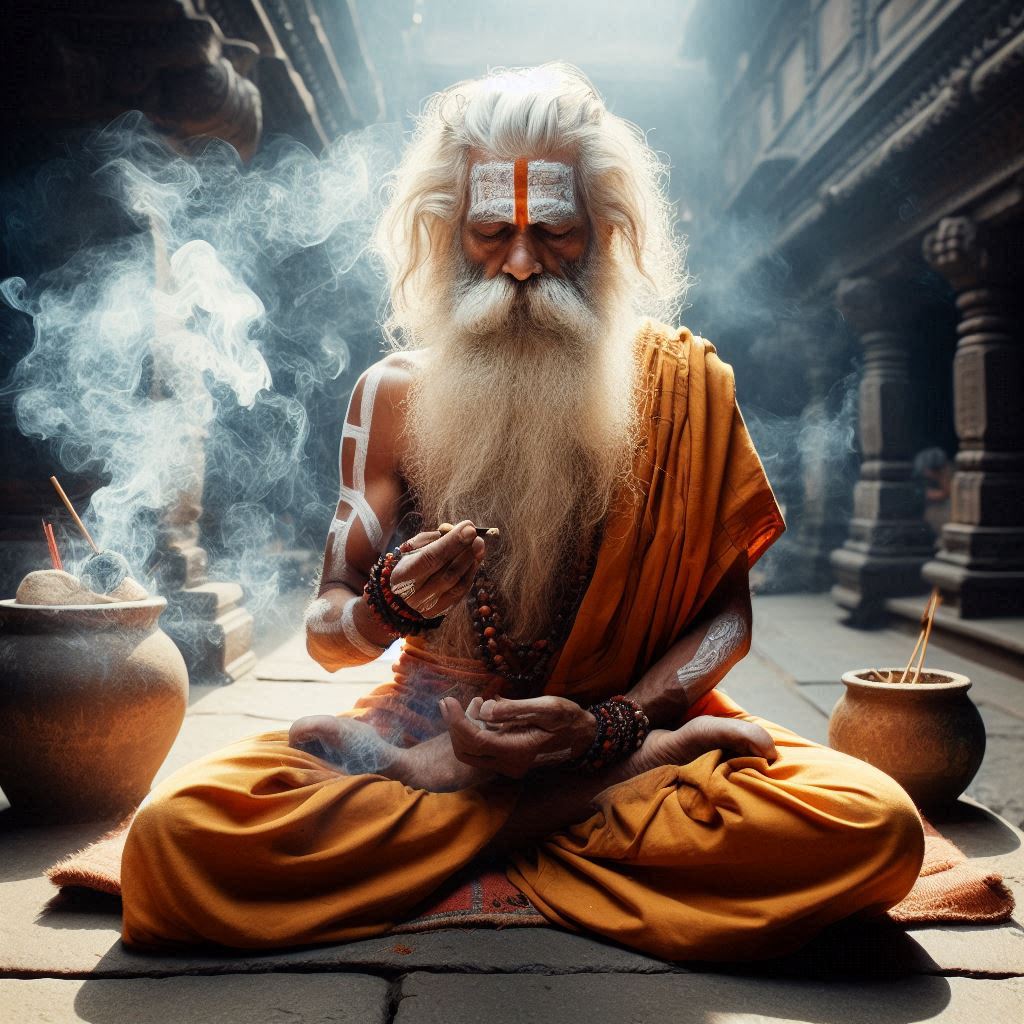
Socio-Political Landscape of Ancient India
During the period of the Ramayan’s composition, ancient India was a land of small kingdoms and tribal societies. The concept of kingship was paramount, and the king was seen as the upholder of Dharma. The political environment was marked by alliances, rivalries, and the constant struggle for power and territory. This backdrop of socio-political dynamics is reflected in the Ramayan, where the themes of governance, loyalty, and duty are explored in depth.
The Composition of the Ramayan
Maharishi Valmiki – The Adi Kavi
The Ramayan is traditionally attributed to Maharishi Valmiki, a revered sage who is often referred to as the Adi Kavi or the first poet. According to legend, Valmiki composed the Ramayan after being inspired by the story of Lord Ram, which he learned through divine intervention. His transformation from a reformed bandit to a sage symbolizes the power of penance and devotion, themes that resonate throughout the epic.
Timeframe of the Ramayan’s Composition
The exact timeframe of the Ramayan’s composition is a topic of scholarly debate. However, it is widely believed to have been composed around the 5th to 4th century BCE. The epic was passed down orally before being written down, which allowed for its preservation and widespread dissemination across generations.
Cultural and Religious Context
Hindu Dharma and the Ramayan
The Ramayan is deeply embedded in Hindu Dharma, reflecting the principles and values that form the core of Hindu belief systems. The epic serves as a spiritual guide, illustrating the importance of adhering to Dharma, fulfilling one’s duties, and maintaining moral integrity.
Shloka:
धर्म एव हतो हन्ति, धर्मो रक्षति रक्षितः।
तस्माद्धर्मो न हन्तव्यो, मा नो धर्मो हतोऽवधीत्।।
Dharma eva hato hanti, dharmo rakṣati rakṣitaḥ।
Tasmād dharmo na hantavyo, mā no dharmo hato’vadhīt।।
Translation: Dharma, when destroyed, destroys; Dharma, when protected, protects. Therefore, Dharma should not be violated, lest it destroy us.
This shloka emphasizes the protective and destructive power of Dharma, a theme that is intricately woven into the narrative of the Ramayan.
The Role of the Ramayan in Rituals and Festivals
The Ramayan plays a central role in many Hindu rituals and festivals. The most notable is Ram Navami, which celebrates the birth of Lord Ram, and Diwali, which commemorates his return to Ayodhya after defeating Ravan. These festivals are not just religious observances but also cultural celebrations that bring communities together.
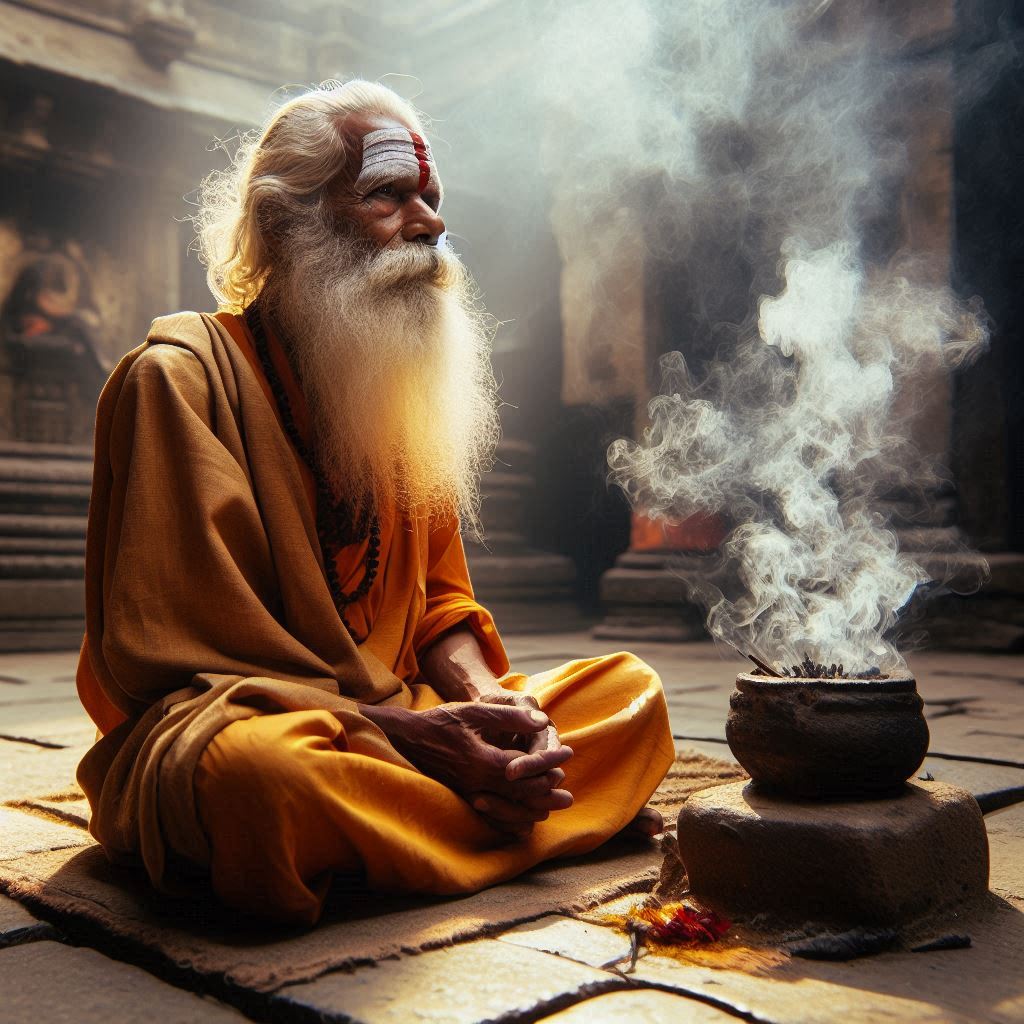
The Ramayan in Indian Society
The Caste System and Its Representation
The Ramayan, while being a spiritual epic, also reflects the societal structures of its time, including the caste system. The characters in the Ramayan often act within the boundaries of their societal roles, yet the epic also challenges these norms through the actions and words of its protagonists. For example, the alliance between Ram and the Vanara king Sugriva transcends the conventional caste boundaries, showcasing the epic’s nuanced portrayal of social issues.
The Role of Women as Depicted in the Epic
The Ramayan presents a complex portrayal of women, reflecting both the societal norms of the time and the ideals of feminine virtue. Sita, the wife of Ram, is the epitome of purity and devotion. However, her trials and tribulations also highlight the challenges faced by women in adhering to societal expectations.
Doha:
सीता संग रहत रघुराई।
हरि अनुग्रह सब सुखदाई।
Sītā saṅg rahat Raghurāī।
Hari anugrah sab sukhadāī।
Translation: With Sita by his side, Ram embodies divine grace, bringing joy and prosperity to all.
The Concept of Kingship and Governance
Kingship in the Ramayan is portrayed as a divine duty. Ram is often referred to as Maryada Purushottam, the ideal king who upholds justice, fairness, and Dharma. The Ramayan provides a blueprint for righteous governance, where the king is not only a ruler but also a servant of the people.
The Geographical Setting of the Ramayan
The Kingdom of Ayodhya
Ayodhya, the birthplace of Lord Ram, is one of the most revered cities in Hinduism. It is depicted as an ideal kingdom, where peace, prosperity, and righteousness prevail. Ayodhya serves as the backdrop for much of the early part of the Ramayan, symbolizing the virtues of a just and noble society.
The Forest Exile and Its Symbolism
The forest, where Ram spent 14 years in exile, holds deep symbolic meaning in the Ramayan. It represents the challenges and hardships that one must endure in the pursuit of Dharma. The forest is not just a physical space but also a metaphor for the trials of life, where characters are tested and their true nature is revealed. The exile marks a period of introspection, self-discovery, and preparation for the ultimate battle against evil.
Shloka:
अरण्यं तु प्रविश्यैव, धीरः संन्यस्तकर्मा भवेत्।
दुःखं हि समनुप्राप्य, त्यजेदर्थान्प्रियानपि।।
Araṇyaṁ tu praviśyaiva, dhīraḥ saṁnyasta-karmā bhavet।
Duḥkhaṁ hi samanuprāpya, tyajedarthānpriyānapi।।
Translation: Entering the forest, the wise one renounces worldly duties. Even in great suffering, one should abandon even dear possessions.
This shloka reflects the philosophy of renunciation and the acceptance of suffering as a path to spiritual growth, themes that are central to the forest exile in the Ramayan.
The Land of Lanka – A Historical Perspective
Lanka, the kingdom ruled by Ravan, is depicted as a land of immense wealth and power, yet it is also a place of great moral decay. Historically, Lanka is believed to be present-day Sri Lanka, though the exact geographical correlations are debated. In the Ramayan, Lanka serves as the final battleground where the forces of good and evil clash. The fall of Lanka symbolizes the inevitable downfall of arrogance, greed, and unrighteousness.
Cultural Significance of the Ramayan
The Ramayan in Literature and Art
The Ramayan has profoundly influenced Indian literature and art. It has inspired countless retellings, adaptations, and interpretations in various regional languages and literary forms. Classical Sanskrit literature, as well as vernacular traditions, have drawn extensively from the Ramayan, making it a central text in Indian literary culture.
Shloka:
काव्येषु नाटकं रम्यं, तत्र रामायणं शुभम्।
भाषासु संस्कृतं दिव्यं, काव्यं तत्र च योग्यता।।
Kāvyeṣu nāṭakaṁ ramyaṁ, tatra Rāmāyaṇaṁ śubham।
Bhāṣāsu Saṁskṛtaṁ divyaṁ, kāvyaṁ tatra ca yogyatā।।
Translation: Among all poetic works, drama is delightful; among them, the Ramayan is the most auspicious. Among languages, Sanskrit is divine, and it is most suited for poetry.
This shloka celebrates the Ramayan as a pinnacle of literary achievement in Sanskrit drama, highlighting its cultural importance.
Depictions in Sculpture and Paintings
The stories and characters of the Ramayan have been immortalized in Indian art, particularly in temple sculptures, murals, and paintings. Temples across India feature intricate carvings that depict scenes from the Ramayan, from Ram’s birth to his coronation. These artistic representations serve as a visual narrative, preserving the epic’s legacy for future generations.
The Ramayan’s Influence Beyond India
The influence of the Ramayan extends far beyond the borders of India. In Southeast Asia, particularly in countries like Thailand, Indonesia, and Cambodia, the Ramayan has been adapted into local cultures, with each region adding its unique flavor to the narrative. The epic has been depicted in temple architecture, shadow puppetry, and classical dance, showcasing its universal appeal and adaptability.
Shloka:
विश्वं तद्रामायणं नित्यं, भारतस्य परंपरा।
यत्र यत्र कथा लोके, तत्र तत्र ह्यसौ कथा।।
Viśvaṁ tad-Rāmāyaṇaṁ nityaṁ, Bhāratāsya paraṁparā।
Yatra yatra kathā loke, tatra tatra hyasau kathā।।
Translation: The Ramayan is a perennial tradition of Bharat. Wherever stories are told in the world, there too is the tale of Ram.
This shloka captures the global reach of the Ramayan, emphasizing its place in the storytelling traditions of various cultures.
Southeast Asian Adaptations
In Southeast Asia, the Ramayan has been adapted into various forms, such as the Thai Ramakien, the Cambodian Reamker, and the Indonesian Kakawin Ramayana. These adaptations not only reflect the original narrative but also incorporate local beliefs, customs, and artistic styles, making the Ramayan a truly global epic.
Global Influence and Interpretations
The Ramayan has inspired global literature, cinema, and even modern philosophical discourses. Its themes of heroism, morality, and the battle between good and evil resonate with audiences worldwide. The universal appeal of the Ramayan is a testament to its timeless wisdom and the power of its narrative.
The Ramayan in Performing Arts
Ram Lila: The Theatrical Tradition
One of the most enduring cultural traditions associated with the Ramayan is the Ram Lila, a theatrical performance that enacts the life and adventures of Lord Ram. Ram Lila is performed annually in many parts of India, especially during the festival of Dussehra. This performance is not just entertainment but a spiritual act of devotion, bringing the story of the Ramayan to life for audiences of all ages.
Ramayan in Classical Dance and Music
The Ramayan has also been a rich source of inspiration for classical dance forms such as Bharatanatyam, Kathak, and Odissi. These dance forms often depict scenes from the Ramayan, with the dancers embodying the characters and emotions of the epic. Classical music compositions, particularly in Carnatic and Hindustani traditions, also draw upon the themes and stories of the Ramayan.
The Moral and Ethical Teachings of the Ramayan
Lessons on Dharma and Righteousness
At its core, the Ramayan is a guide to living a life of Dharma, or righteous conduct. The characters in the epic embody various aspects of Dharma, teaching us the importance of duty, honor, and integrity. Whether it is Ram’s adherence to his father’s promise, Sita’s unwavering loyalty, or Hanuman’s selfless service, the Ramayan provides a blueprint for ethical living.
Shloka:
धर्मो रक्षति रक्षितः, धर्मेण हन्ति हन्तः।
तस्माद्धर्मं न त्यजेत्, धर्मो हि सुखमावहः।।
Dharmo rakṣati rakṣitaḥ, dharmeṇa hanti hantaḥ।
Tasmād dharmaṁ na tyajet, dharmo hi sukhamāvahaḥ।।
Translation: Dharma protects those who protect it, and destroys those who destroy it. Therefore, one should never abandon Dharma, as it brings true happiness.
This shloka encapsulates the essence of the Ramayan’s teachings on Dharma and its role in achieving a fulfilling and righteous life.
The Ramayan as a Moral Compass
The Ramayan serves as a moral compass, guiding individuals on how to navigate the complexities of life while upholding ethical principles. The epic’s emphasis on truth, loyalty, and self-sacrifice continues to inspire people to strive for moral excellence in their own lives.
The Ramayan’s Enduring Legacy
Modern-Day Relevance
Despite being an ancient text, the Ramayan’s teachings remain relevant in today’s world. Its lessons on leadership, family values, and moral integrity provide timeless guidance that can help individuals and societies navigate contemporary challenges.
The Ramayan in Contemporary Popular Culture
The Ramayan has found a place in contemporary popular culture, with numerous adaptations in films, television series, and even graphic novels. These modern retellings introduce the epic to new generations, ensuring that the story of Ram and his adventures continues to resonate with audiences across the world.
Conclusion
The Ramayan: A Historical and Cultural Beacon
The Ramayan stands as a historical and cultural beacon, illuminating the path of righteousness for generations. Its rich tapestry of stories, characters, and teachings offers valuable insights into the human condition and the eternal struggle between good and evil.
Preserving the Legacy of the Ramayan for Future Generations
As we move forward in an ever-changing world, it is crucial to preserve the legacy of the Ramayan. By studying and sharing its teachings, we can ensure that the wisdom of this ancient epic continues to guide and inspire future generations.
FAQs
When was the Ramayan written?
The Ramayan is believed to have been composed between the 5th and 4th centuries BCE. It was initially passed down orally before being written down, making it one of the oldest epics in world literature.
Who wrote the Ramayan and why?
The Ramayan was written by Maharishi Valmiki, known as the Adi Kavi or the first poet. Valmiki composed the epic after being inspired by the life and virtues of Lord Ram, with the intention of preserving and sharing his story.
How does the Ramayan influence Indian culture today?
The Ramayan continues to influence Indian culture in numerous ways, from religious practices and festivals to literature, art, and performing arts. Its teachings on Dharma and moral values remain deeply embedded in Indian society.
What is the geographical significance of the locations mentioned in the Ramayan?
The Ramayan’s geographical settings, such as Ayodhya, the forests, and Lanka, are symbolic of various stages of life and the moral challenges one must face. These locations also reflect the cultural and historical landscape of ancient India.
How has the Ramayan been adapted in other cultures?
The Ramayan has been adapted in various cultures, particularly in Southeast Asia, where it has influenced literature, art, and performing arts. Each adaptation reflects the local cultural context while preserving the essence of the original epic.



